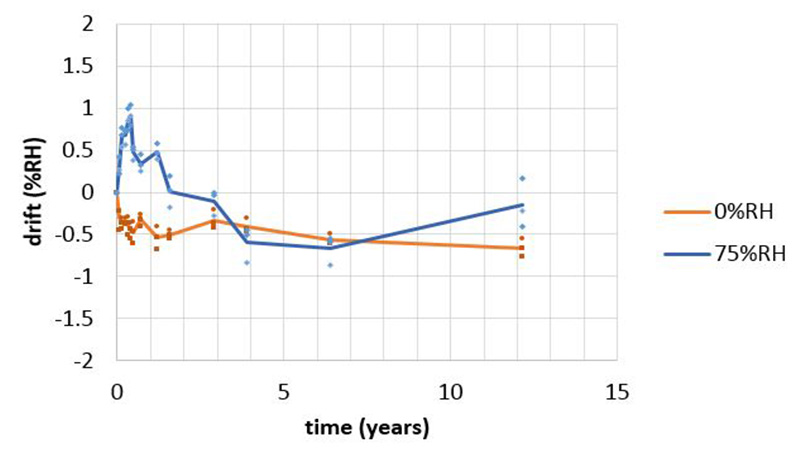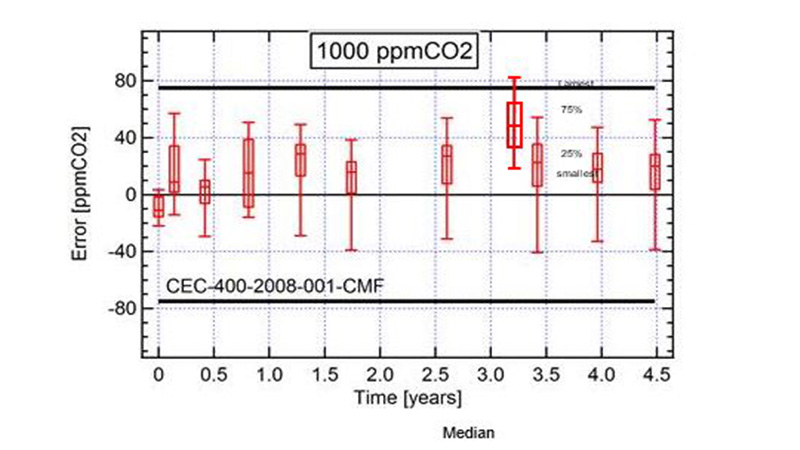Sensor maintenance for optimal energy savings in HVAC
Advanced control regimes such as Demand Controlled Ventilation (DCV) and free cooling are gaining popularity as the pressure to reduce energy consumption in HVAC is mounting. However, no amount of intelligence in the building automation system will help you if the sensor measuring the actual conditions has drifted. It is also not enough that accuracy requirements are met out of the box, the requirements should be maintained during the lifetime of the building. Indoor air conditions are considered benign for sensors. On the other hand sensors used in building automation are rarely calibrated or serviced once the system has been commissioned. Miswired or faulty sensors are common, so at least one comparison measurement should be done during the system commissioning. It is advisable to check the installed sensors after a couple of years against a reliable handheld instrument.
Some measurements demand extra care. I will now discuss outdoor humidity and CO2 sensors in more detail.
Outdoor humidity measurement
Economizers can save energy in some climates by using free cooling from outdoor air. In humid climates the most important factor is the amount of humidity in the outdoor air, not the temperature. At 30°C the enthalpy changes from 30 kJ/kg to 96 kJ/kg when the relative humidity changes from dry to 95%RH. According to ASHRAE standard 90.1, differential enthalpy control or fixed enthalpy control is recommended in economizers for hot and humid climates. The RH accuracy for control sensors should be <±5%RH. While most sensors are specified to ±5%RH or better, this specification is out of the box. The ±5%RH should be maintained over lifetime of the system.
Outdoor humidity measurements are more demanding. The sensors are subjected to high humidity, high winds, solar heating and pollution. It makes sense to use one properly maintained, high-quality outdoor humidity sensor instead of multiple low quality sensors.
Maintenance includes, in addition to periodic checking of the measurement, also regular cleaning of the radiation shield. Failure to do so may lead to temperature readings several °C higher and relative humidity values more than 10%RH lower than actual values.

The most important consideration is to use a sensor designed for outdoor use. Some sensors that look good on the data sheet can drift so much in outdoor conditions as to be unusable after a few months. In Figure 1 you can see the test results for 3 Vaisala HUMICAP® sensors used outdoors for more than 12 years at the Vaisala outdoor test site in Vantaa, Finland. Even with these impressive results, we still recommend periodic checking against a reliable handheld instrument at least every second year as conditions outdoors vary dramatically.
CO2 sensors
CO2 sensors are central in reducing energy consumption using DCV. As the measurement directly controls the amount of fresh air used accuracy requirements are tightening. The Californian regulation CEC-400-2008-001-CMF requires a ±75ppm accuracy at 600 ppm and 1000 ppm including 5 years stability. ASHRAE standard 90.1 for green buildings requires a ±50 ppm accuracy at 1000 ppm. This kind of accuracy will not be achieved with simple instruments relying on 400 ppm background concentration compensation algorithms. The 1000 ppm control CO2 concentration is too far from the supposed 400 pm background CO2 concentration as sensitivity drift is also likely to build up over time. Especially the ±50 ppm requirement can be achieved only with dual beam or single beam-dual wavelength instruments (like the Vaisala CARBOCAP®) that are regularly calibrated using calibration gases. A calibration interval of 2 years is probably enough depending on the instrument type.
The most important consideration is to use a sensor designed for outdoor use. Some sensors that look good on the data sheet can drift so much in outdoor conditions as to be unusable after a few months. In Figure 1 you can see the test results for 3 Vaisala HUMICAP® sensors used outdoors for more than 12 years at the Vaisala outdoor test site in Vantaa, Finland. Even with these impressive results, we still recommend periodic checking against a reliable handheld instrument at least every second year as conditions outdoors vary dramatically.

Figure 2 Indoors stability test results for 23 GM10 CO2 modules at 1000 ppm. Black lines represent California standard CEC-400-2008-001-CMF requirements.
For slightly lower requirements a five-year service or replacement regime may be enough as demonstrated in Fig. 2, which shows the stability of 23 tested Vaisala CARBOCAP® GM10 measurement modules.
Where outdoor CO2 sensors are used in order to control a 600 ppm difference between indoor and outdoor CO2 concentrations, this single sensor becomes one of the most important sensors in the whole building. Drift in this sensor will affect all the independent zones in the building.
In conclusion:
Many HVAC instruments are used in order to save energy. To achieve projected energy savings the measurements have to perform properly during their whole lifetime. If something is worth measuring, it is worth measuring right!
Visit our preference center to receive Vaisala Knowledge eNewsletters and get access to interesting stories, articles and viewpoints on the topics and themes that are relevant to you.


Comment
Add new comment